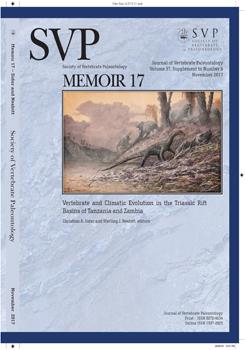The Permian-Triassic mass extinction (PTME) was one of the transformative events of the Phanerozoic, marked by extinction, post-Permian transformation of surviving ecosystems, and the formation of new communities. The South African Karoo Basin has served as the primary source of data on the terrestrial component of these events, but its global applicability remains poorly known. Here, we compare Permian-Triassic communities of the Karoo Basin with those from the Luangwa and Ruhuhu basins of Zambia and Tanzania, respectively, analyzing their functional structures and simulating dynamic responses to environmental perturbation. Results show that compositional similarities of late Permian communities among the basins underlie similarities in their dynamics and resistance to secondary extinction. The Karoo Basin ecosystem also displays evidence of a transformation to increased resistance during the late Permian. Although the Karoo Basin ecosystem was reduced significantly by the PTME, structural features of that resistance persisted into the Early Triassic, facilitated by a greater susceptibility to extinction of small-body-sized amniotes and large carnivorous amniotes. It was undone by the initial stages of postextinction restructuring. Continued evolution of the Triassic ecosystem led to a recovery of resistance, but in a community compositionally dissimilar from its Permian antecedents. Likewise, the upper part of the Lifua Member of the Manda Beds (Middle Triassic) of Tanzania was structurally distinct from the Karoo Basin communities but displayed similar dynamics. The recurrence and convergence of communities with different histories toward similar dynamics suggest that there are taxon-independent norms of community assembly and function operating on geological timescales.
How to translate text using browser tools
1 November 2017
Comparative Ecological Dynamics of Permian-Triassic Communities from the Karoo, Luangwa, and Ruhuhu Basins of Southern Africa
Peter D. Roopnarine,
Kenneth D. Angielczyk,
Savannah L. Olroyd,
Sterling J. Nesbitt,
Jennifer Botha-Brink,
Brandon R. Peecook,
Michael O. Day,
Roger M. H. Smith
ACCESS THE FULL ARTICLE





